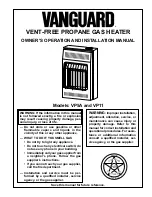
12
Installation instructions for VED electric instantaneous water heater 0020149586_00
4.6
Connecting the unit to the electricity supply
e
Danger!
Risk of death from electric shock from live
lines and connections!
>
Isolate all supplies from the power supply
before carrying out electrical work.
>
Check that there is no voltage in the supply
lines and connections.
>
Ensure that the power cannot be restored
inadvertently to any of the supply lines and
connections while you are working on the
unit.
>
When connecting the electricity supply, also observe
the local regulations from the electricity supply com-
pany as well as the specifications on the identification
plate.
>
Also note the following conditions:
– The unit must be installed using a permanent
connection.
– The permanent connection must be equipped with
a customer-supplied partition that has a contact
separation of at least 3 mm on all lines. A line
protection switch, for example, is suitable for this
purpose.
– The unit must be connected to the protective
earth.
– The unit is delivered pre-assembled. When connect-
ing the electricity supply, only the electricity line
needs to be fed in to the unit and connected. This
happens using one of the two anti-spray-water
sleeves that prevent water penetrating the unit;
see fig. 4.7, Cutting the anti-spray-water sleeve for
the cable routing. The connection is fixed to the
upper section of the unit at the factory. If required,
it can be connected to the lower section of the unit
but the electricity line must be fed through the
lower anti-spray-water sleeve.
4.6.1
Electrical connection from above
The electricity line is fed through the upper anti-spray-
water sleeve (
2
). Figure 4.7 explains how the anti-spray-
water sleeve must be prepared.
>
Connect the individual conductors to L1, L2 and L3,
and the protective earth to the mains connection
terminal (
1
in fig. 4.10).
3
1
2
3a
4
5
6
Fig. 4.10 Electrical connection from above or below
4.6.2 Electrical connection from below
The electricity line is fed through the lower anti-spray-
water sleeve (
5
). Figure 4.7 explains how the anti-spray-
water sleeve must be prepared.
>
Unscrew the mains connection terminal (
1
) (see
fig. 4.10).
>
Move the mains connection terminal (
6
), including the
internal cable, to the lower position (
4
) in the unit.
>
Screw the mains connection terminal to the lower
position (
4
).
>
Pay particular attention to the internal protective
earth (
3
) that is screwed to position
3a
.
>
Check again that the mains connection terminal
cables are correctly positioned.
>
Connect the individual conductors to L1, L2 and L3,
and the protective earth to the mains connection ter-
minal (
1
in fig. 4.10).
4.6.3 Optional load-shedding relay
If required, a load-shedding relay that conforms with
current standards can be connected to the VED. This
relay will turn other power consumers off while hot
water is being drawn off so that there is no overloading.
The load-shedding relay must fulfil the following criteria:
– Input current < 15 A
– Continuous current > 50 A
>
Install the optional load-shedding relay to the outer
conductor that is connected to the L2 mains connec-
tion terminal of the VED.
4 Installation
Summary of Contents for VED
Page 1: ...Operating and installation instructions EXP VED ...
Page 2: ......
Page 3: ...For the operator Instructions for use VED Electric instantaneous water heater ...
Page 9: ...VED Electric instantaneous water heater For the competent person Installation instructions ...
Page 26: ......
Page 27: ......
Page 28: ...0020149586_00 EXPen 072012 Subject to change Manufacturer ...









































